In August, on a run on the Sneffels Highline trail loop above Telluride, I passed a worried hiker who asked if I had any antihistamines. A kid farther up the trail was suffering an allergic reaction and possibly altitude sickness as well, and his distressed parents didn’t know what to do.
I had Band-Aids, ankle wrap and a blister kit with me, but not my whole first aid kit, which contains antihistamines. I ran up the trail to try to find the family and offer what aid I could, but I couldn’t find them; apparently, a search & rescue responder reached them first.
In spite of the fortunate outcome, I berated myself for not carrying a substantial first aid kit. I vowed from then on to always carry it on mountainous outings so that I could help others (and myself if something went wrong—but that possibility seemed remote).
Coincidentally, I had been thinking about first aid and emergency response when I embarked on that summertime outing, even before the hiker asked about allergy med, because I had become certified in Wilderness First Aid a couple of weeks earlier through a NOLS Wilderness Medicine Institute two-day course that I highly recommend (more on that below).
Fast forward to October 1, and Morgan and I are back at our Telluride place, working remotely for a couple of weeks. We came here from the Bay Area to behold the glorious autumn colors, and to winterize our trailer and tent.
We set out early on Saturday morning to hike the Sneffels Highline—a 13.5-mile loop that climbs about 3500 feet from town (elev. 8750′) to a ridge at 12,270′. We packed a lot of stuff—rain gear, Morgan’s big camera, snacks and my first aid kit—anticipating we’d be out there at least half the day. We went the counterclockwise direction, steadily ascending through aspen and pine groves until we got above treeline in Pack Basin.
Here are some pics from the first half of the hike; we met a man at the saddle—the high point between the two alpine basins—who took our photo. At that point, we were almost halfway, around Mile 6. So far, so good!
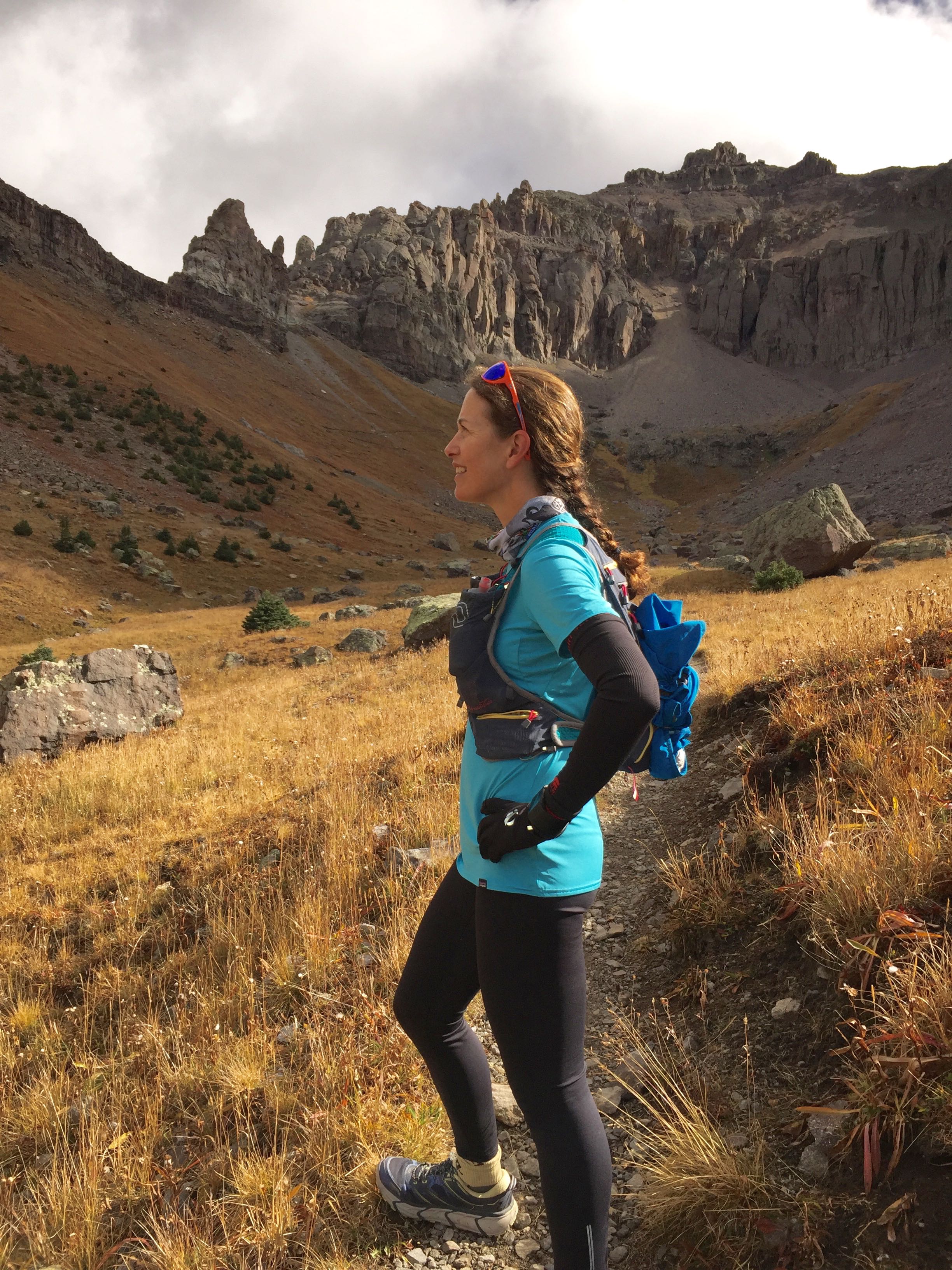
Pausing to look at the views in Pack Basin, before we hiked to the saddle that’s on the ridge toward the left side of the craggy outcrops.
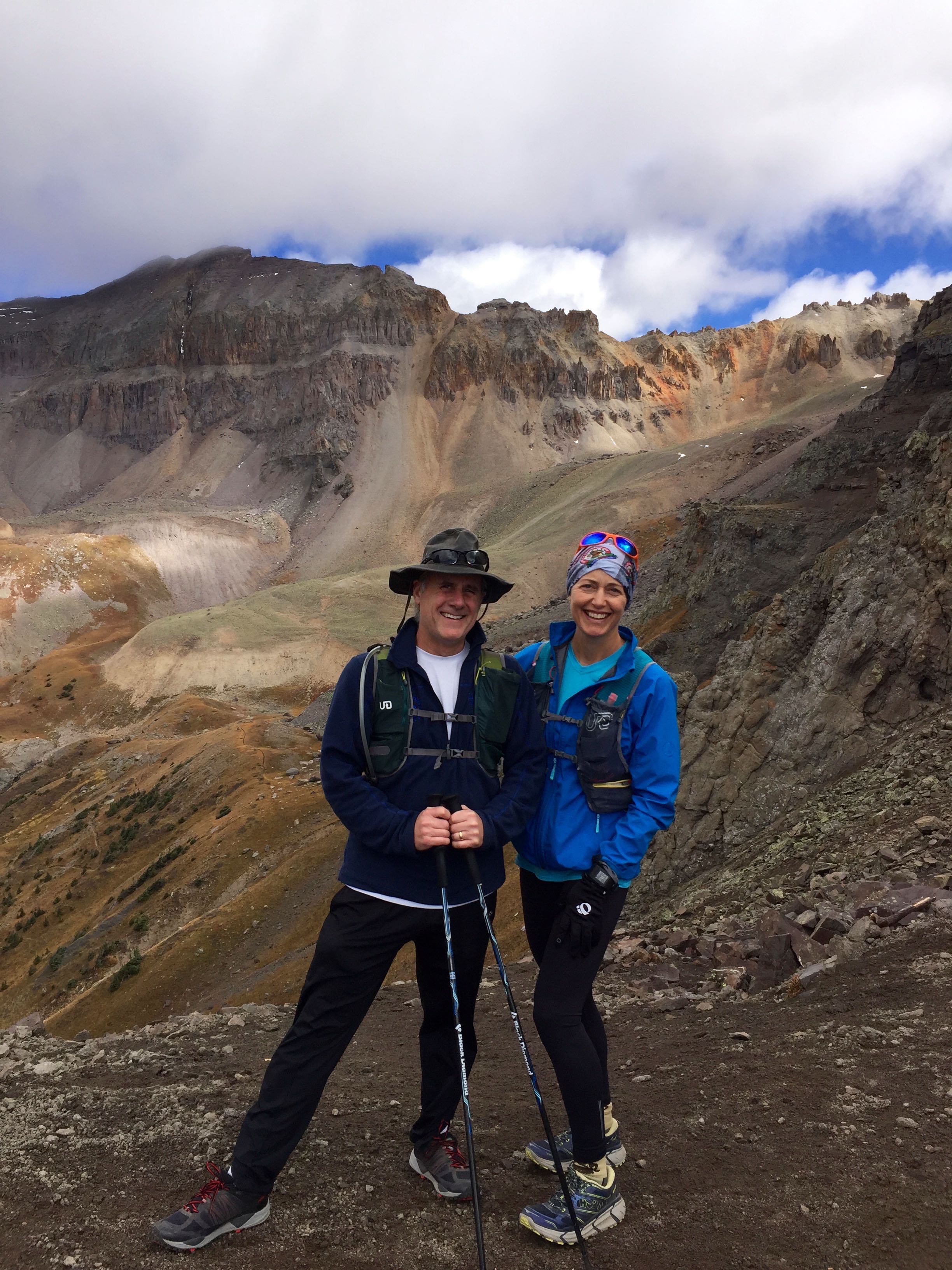
On the saddle overlooking Mill Creek Basin. I put the Buff around my head to keep my ears warm–it was cold up there!
“Here’s where the fun begins,” I told Morgan on the sky-high ridgeline.
We looked down upon a field of talus we had to descend—a swath of chunky, sharp rocks that blanketed the mountainside until the terrain transitioned to alpine tundra.
I was surprised the trail looked so rough, given how well-maintained the other segments were. It turns out, we were peering down a shortcut. The real trail meanders around the edge of the slope, but neither Morgan nor I saw where the trail resumed after we peaked at the saddle, so we both thought the shortcut was the way to go.
Admittedly, I was psyched after a morning of mellow uphill hiking to bomb down this loose-rock section of vert, sans poles, as if I were a Skyrunning champ. I wanted to practice (and maybe show off) my skill on the technical downhill. So I took the plunge and started to surf the scree and talus as best I could, using my hands to catch my balance.
Suddenly, about three-quarters of the way down the slope, a fast-moving, razor-edged chunk of rock about the size of a cantaloupe pummeled toward my right ankle and hit it with a sickening force. Motherfu**er that hurt!! I said under my breath, not yelling, because I wanted keep my cool and keep working on this talus-surfing technique, but holy moly, my ankle was throbbing. The only option was to tough it out and get down the mountainside.
I took a few steps. The pain numbed out. But something replaced the pain: a bright red, shiny wet spot seeping through my sock.
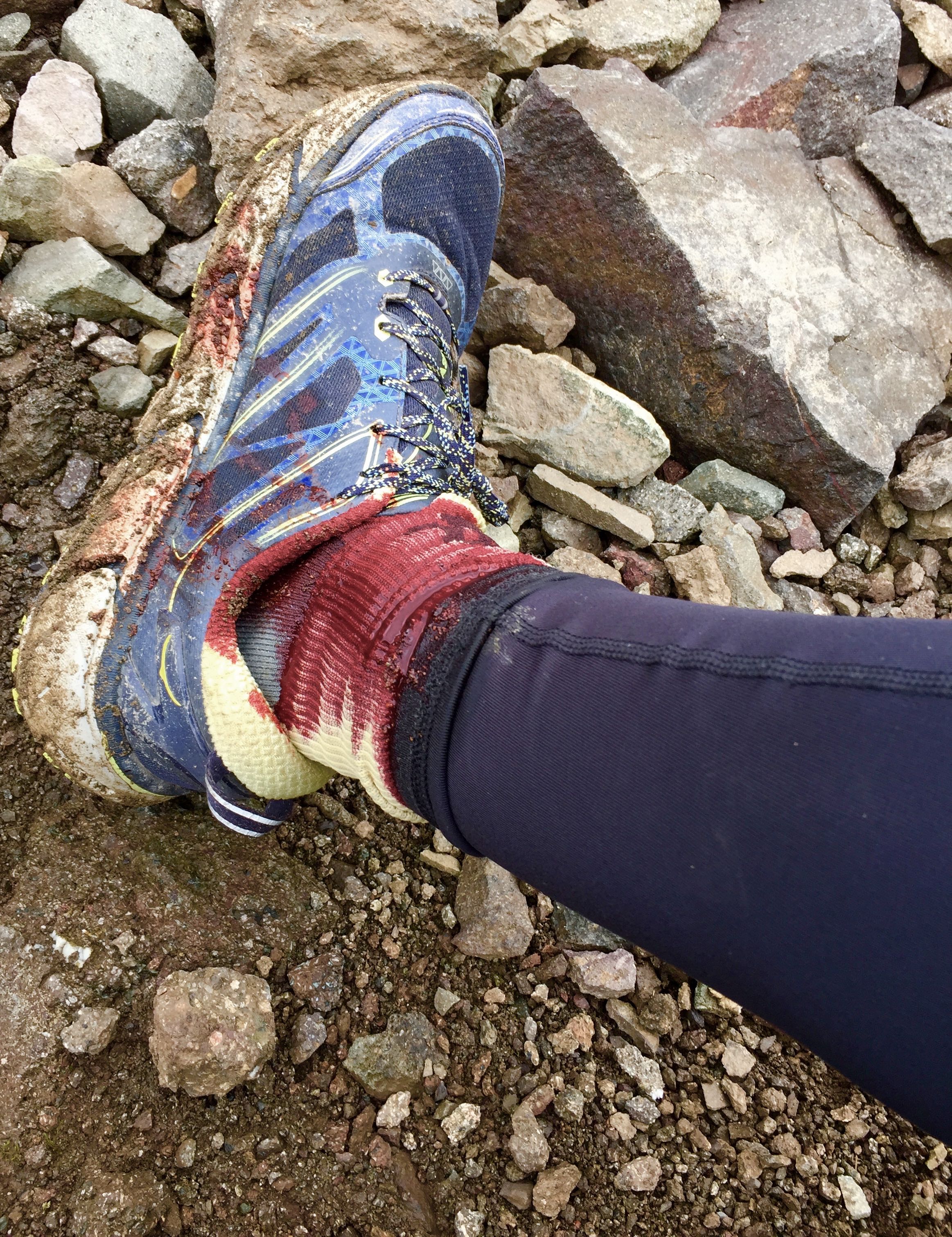
Hmmm…I wonder how it looks under the sock? Damn, those are my favorite socks too—the Drymax with the Western States 100 logo!
The weirdest thing happened then. Instead of being scared, I thought, Oh goody, I get to use my first aid kit! I know what to do!
My Wilderness First Aid training came to the rescue. I carefully navigated myself to a point on the trail where I could rest, and I instructed Morgan to assist me with the following steps to treat what turned out to be a deep puncture wound:
- Elevate the leg to reduce blood flow, then expose the injury.
- Tie a cravat triangle bandage around the wound area to apply pressure and soak up blood.
- Fill the 12cc irrigation syringe with water from water bottle and use it to blast the wound with water, flushing out any debris.
- Apply more pressure because the motherfu**er wouldn’t stop spurting blood.
- Tell a nice hiker who comes by looking horrified, and asking if he can help, to take a pic with my phone so we can show the kids later.
- Get alcohol wipes and butterfly bandage and ask Morgan to clean the wound area and apply the butterfly across the cut, because my fingers felt too numb to work and my head felt a little woozy.
- Curse out loud when the butterfly won’t stick, but then feel like a rockstar because I realize my first aid kit has plenty of butterfly bandages and alcohol wipes. Try again.
- Butterfly bandage firmly in place across the wound’s opening, apply 2″ gauze dressing and tape it on with medical tape.
- Check my CSM (circulation, sensation, movement) in foot and toes to make sure we’re not taping the wound too tight.
- Use a roll of self-adhering elastic bandage to wrap the entire ankle, which is bruising and throbbing slightly from the rock’s impact.
- Put sock and shoe back on, clean up first aid trash, and test out the ankle’s ability to bear weight.
- Take two anti-inflammatories to reduce pain and swelling.
- Get moving to warm up because we’re getting chilly!
The bleeding stopped, and I could hike on my ankle without much pain. We were ready to conquer the remaining 7-plus mostly downhill miles!

First aid treatment successful, I was ready to finish this hike! This photo shows my blood-soaked sock and the talus field in the background where the accident happened.
It may seem odd I was in such a good mood. I just felt so relieved—and dare I say, empowered—that I had the know-how and supplies to deal with a situation that could have been serious. And damn, I felt proud of myself for taking that Wilderness First Aid course over summer so that I’m better equipped to handle shit that happens when I’m doing what I love: running and hiking in the backcountry.
My injury ended up being not that big of a deal, after all. The rest of the hike was quite lovely. I limped a little during the first mile, and then everything felt OK.
Back home, I cleaned the cut and put fresh bandages on it. The wound looks pretty puny, given how much blood it produced. I think it healed a lot on the hike home. My ankle feels stiff from the bruising and swelling, but it’s not serious.

Later in the day, my ankle looked a little bruised and swollen, and the cut looked relatively benign.
If you like to spend time on remote trails, then I encourage you to get first aid training, preferably a Wilderness First Aid course offered by NOLS. The course teaches a very specific system for assessing people who are hurt in the backcountry, along with how to treat a variety of injuries and illnesses, and how to make tough decisions (such as whether and how to evacuate). I have ultrarunner and NOLS Wilderness Medicine Institute instructor Liza Howard to thank for inspiring me to do this.
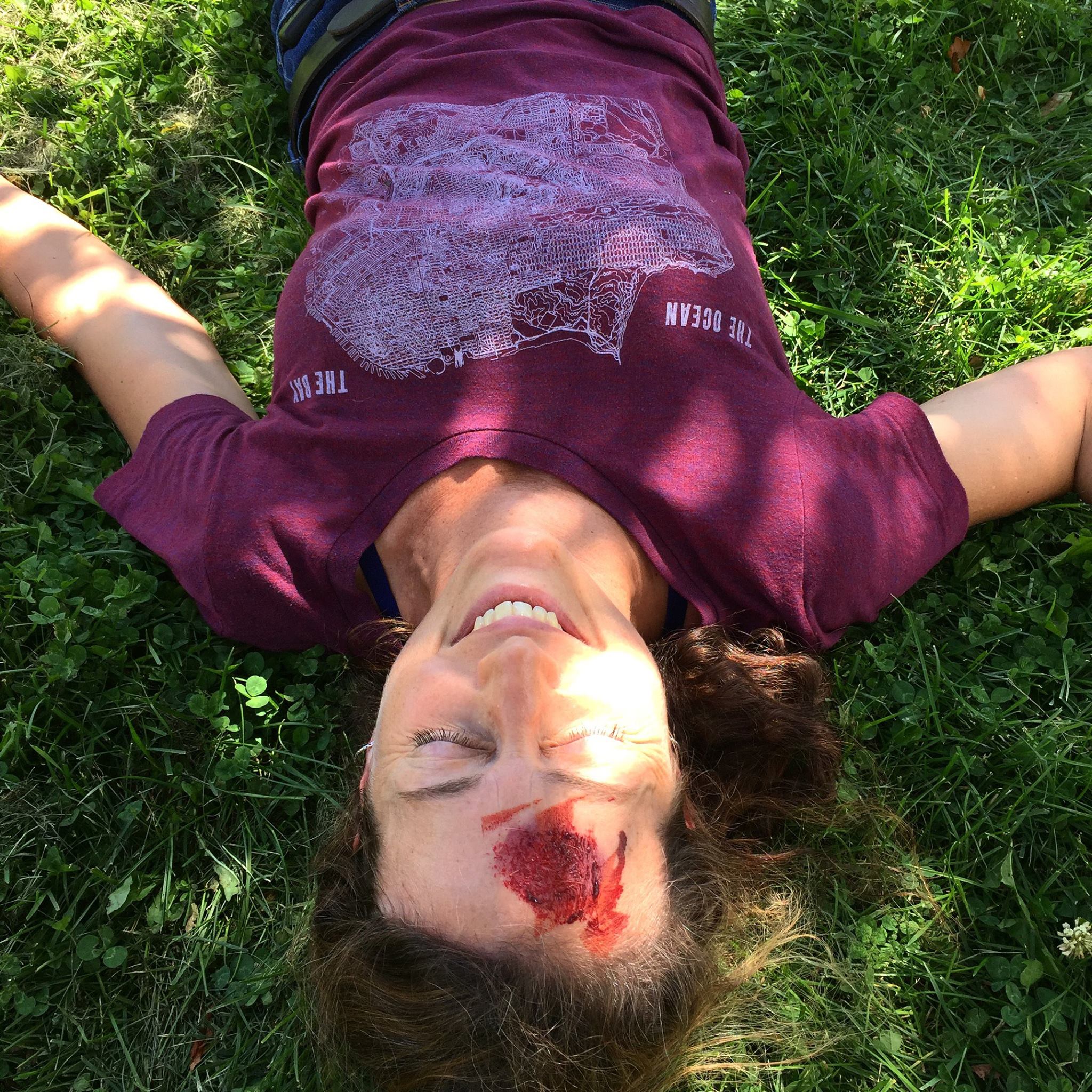
At the two-day Wilderness First Aid course, students role-play patient assessment and treatment scenarios. At the course I took in Carbondale this summer, I got to pretend I had a head injury (that’s stage makeup).
I case you’re wondering, here are the first aid and safety supplies I carry:
- NOLS Med Kit 1.0, which contains dressings, bandages, alcohol wipes, ointment, tape, ibuprofen, antihistamine, tweezers
- Ziploc containing extra supplies: latex gloves, self-adhering elastic bandage to wrap an ankle, a cravat triangle bandage, a small pair of scissors, safety pins, an irrigation syringe
- small Ziploc bag with blister kit: needle, alcohol wipes, assorted Band-Aids and tape
- safety whistle, emergency blanket, cell phone
Be safe and have fun out there!
I’ll end with some more autumn pics:
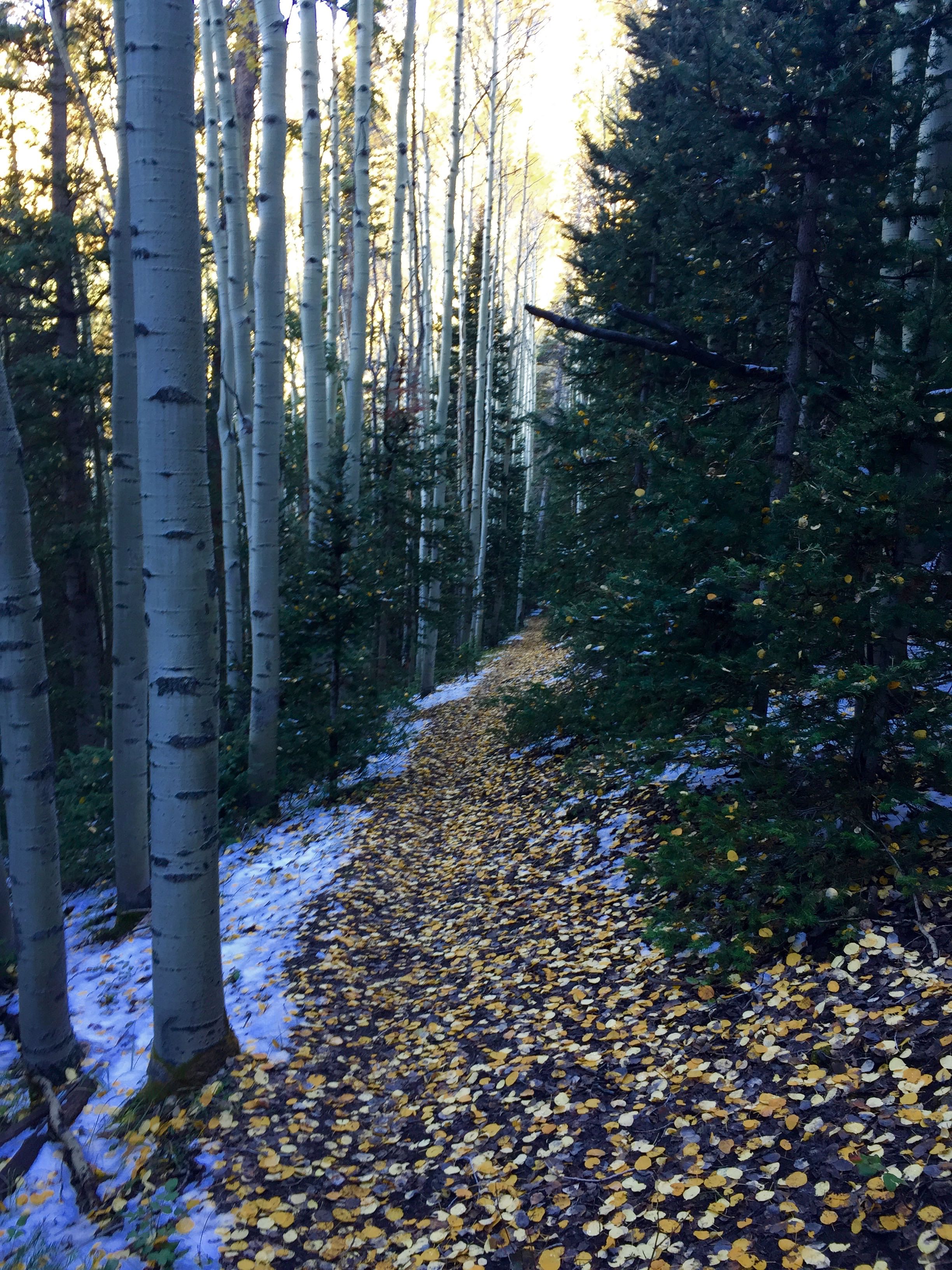
I shot this one week ago while racing the Deep Creek Half Marathon.


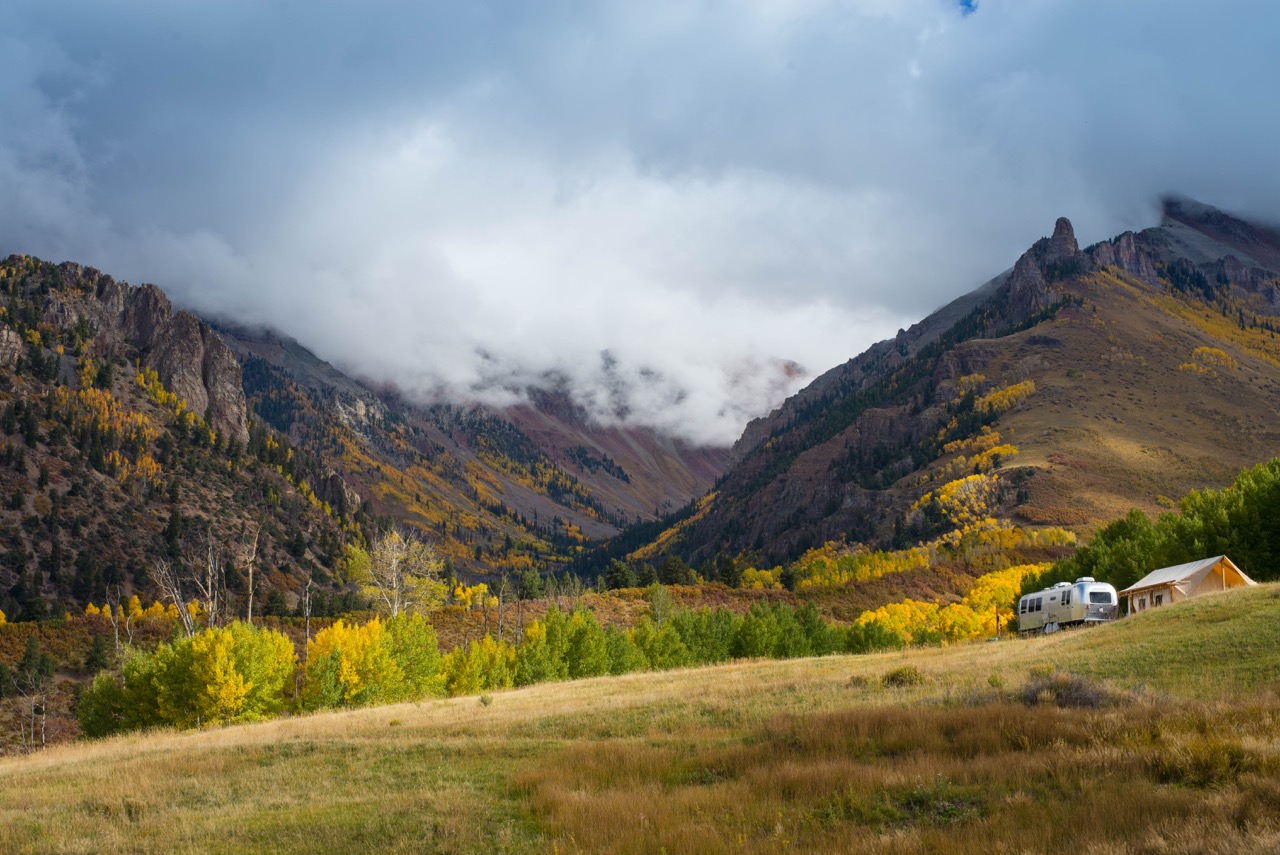

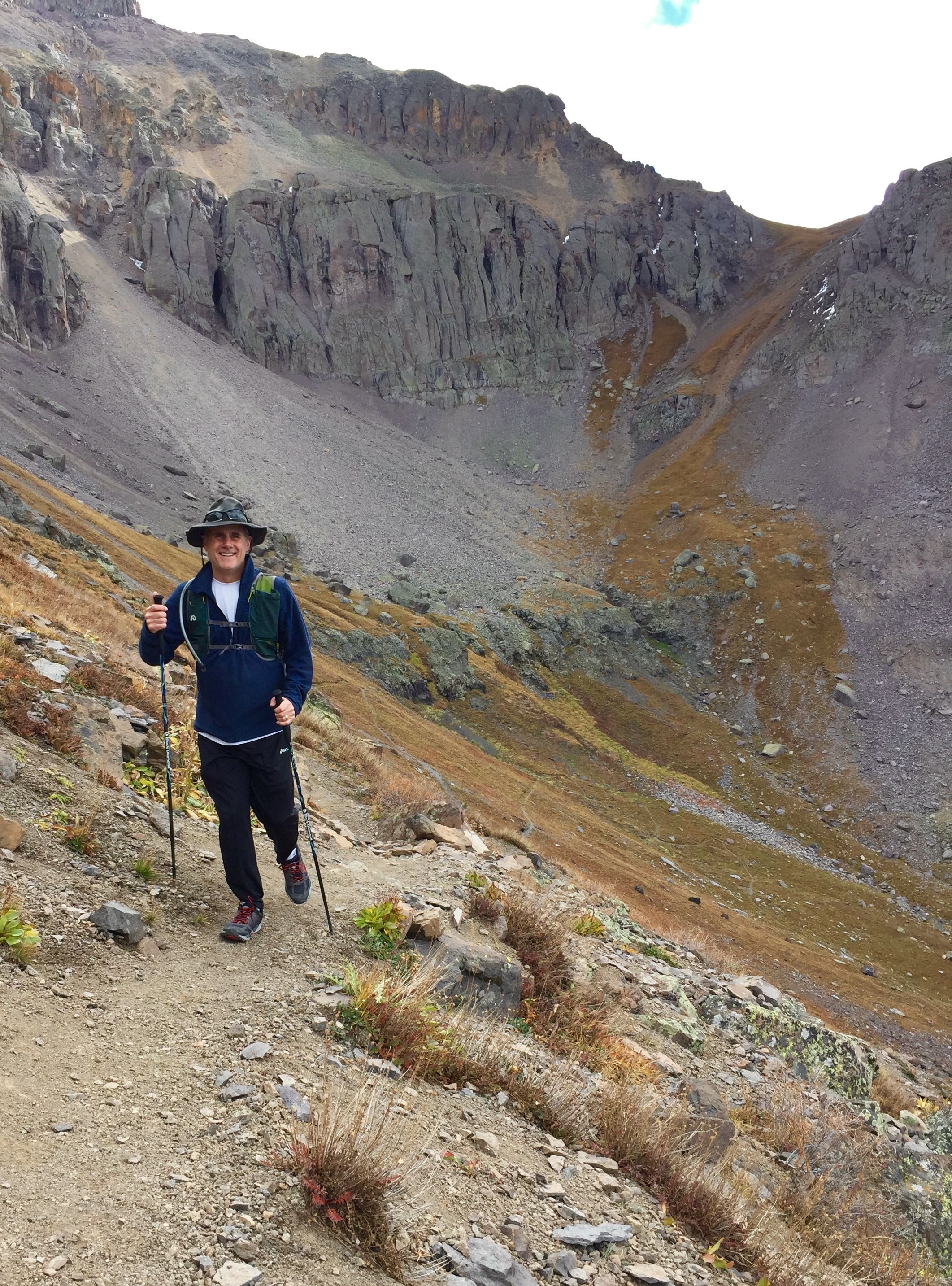


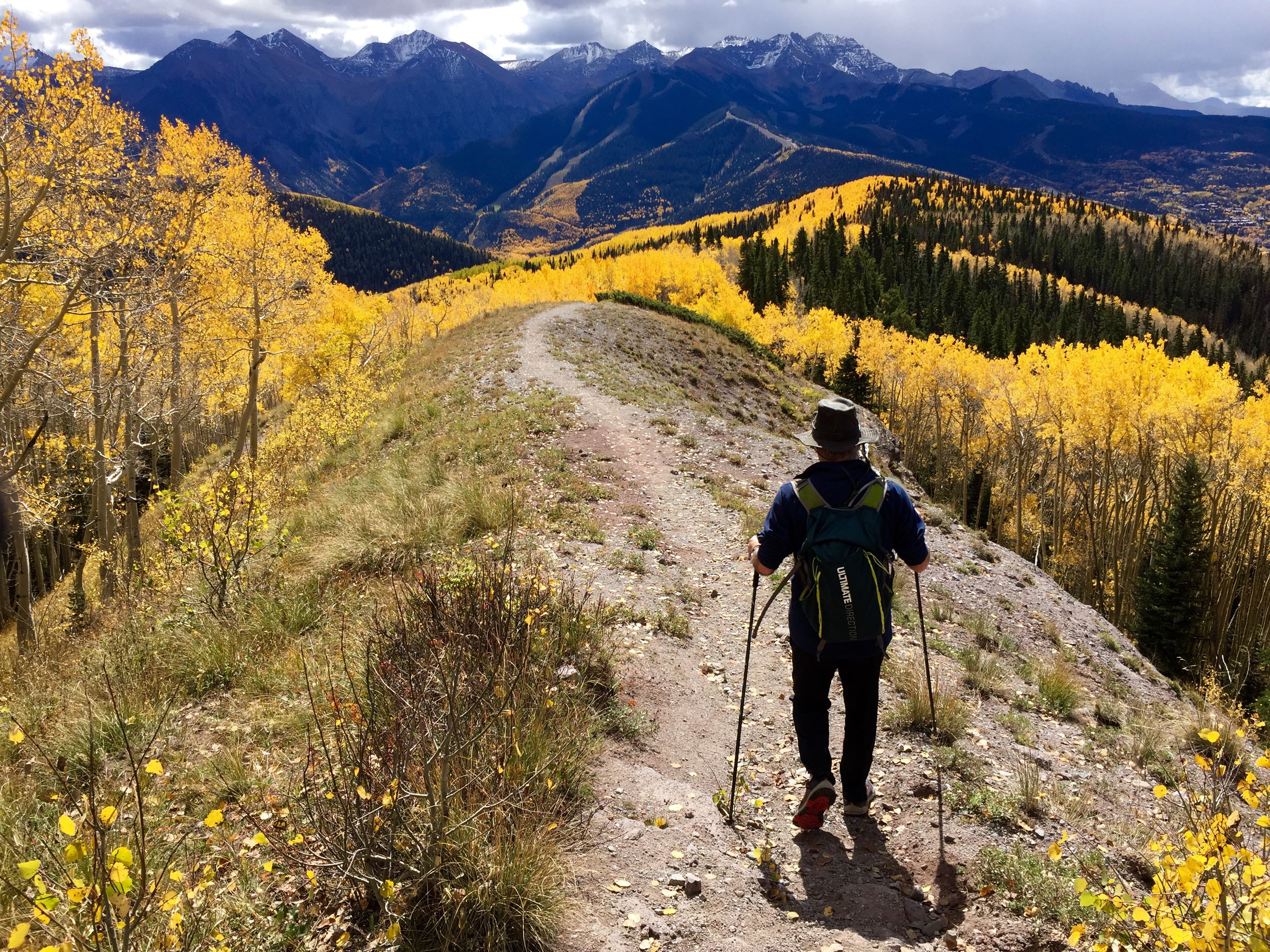
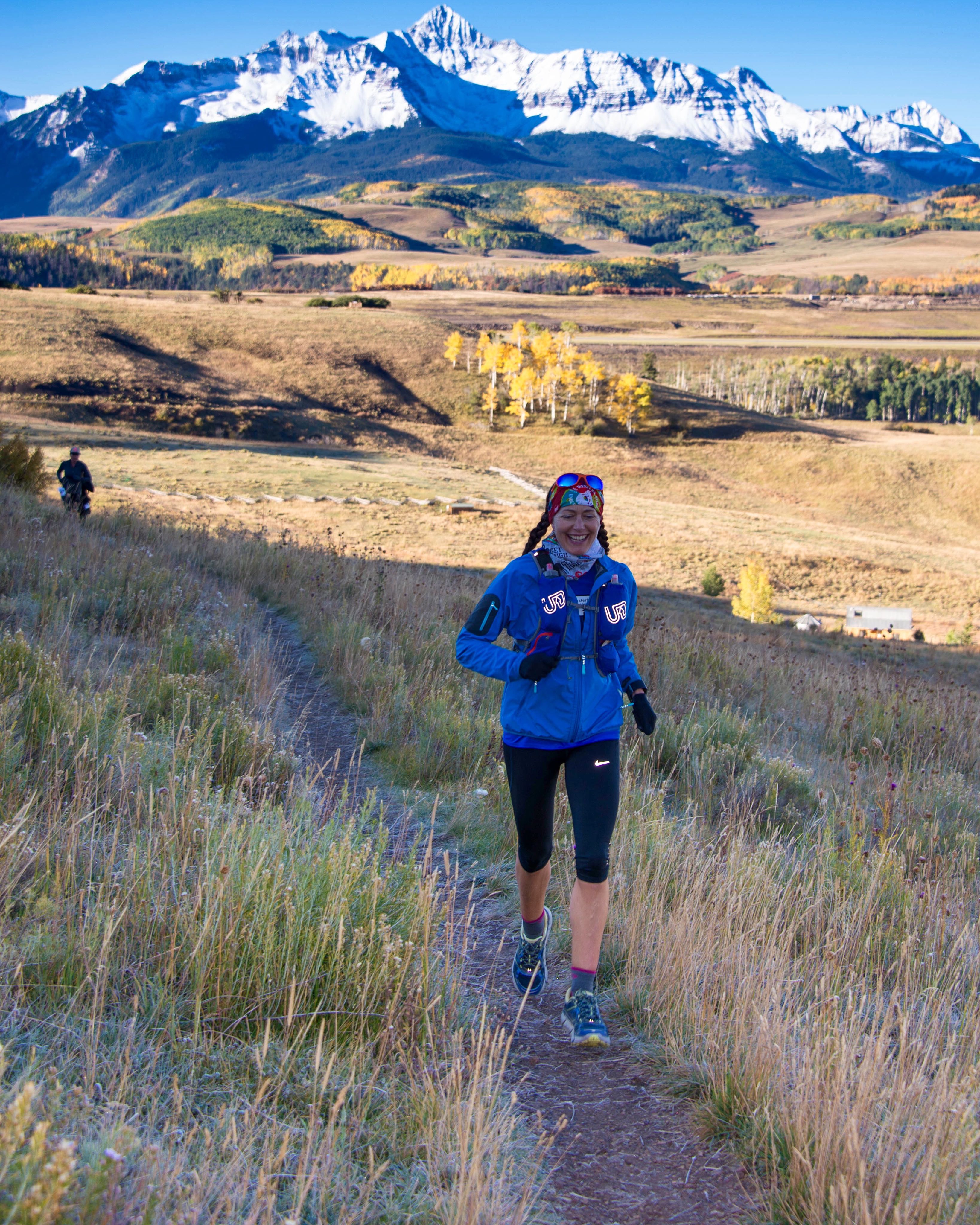
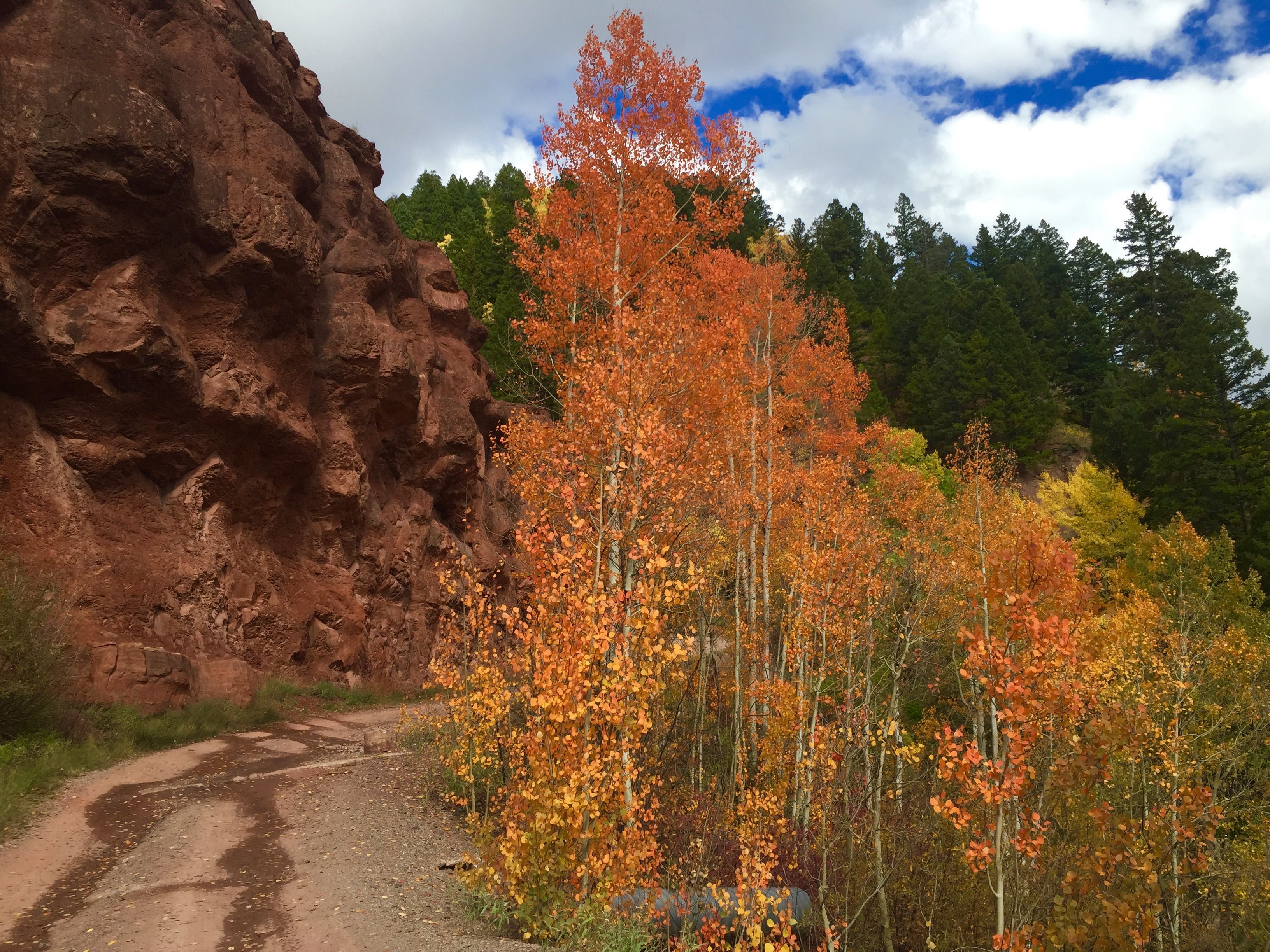
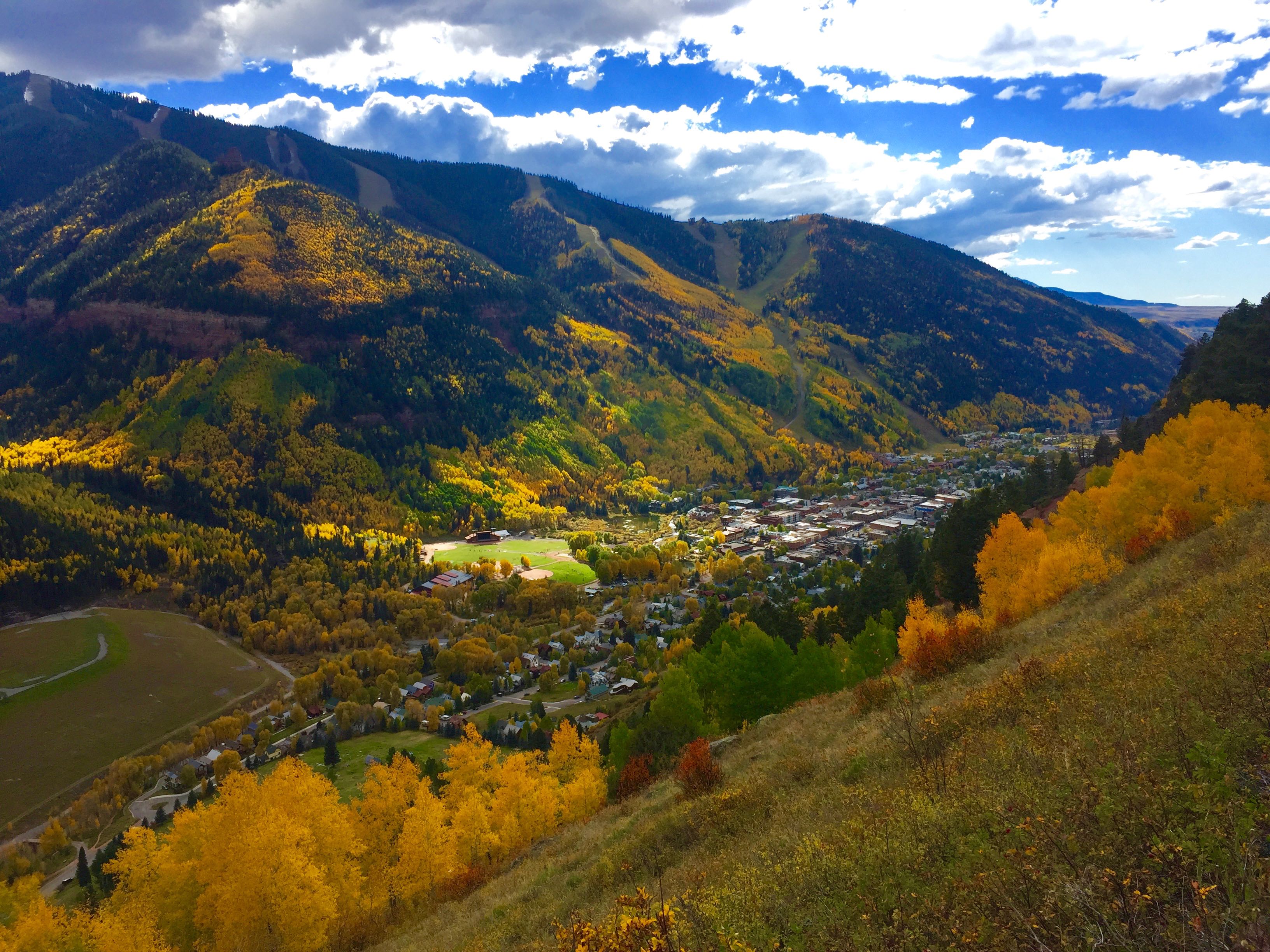

Because of you and Liza, I have taking one of these classes on my todo list. And sadly, the first question that came to mind after reading this was “did that sock survive and become clean again?”
Hey Sarah,
Glad to see you are ok, and I will definitely be looking into one of these courses or whatever the equivalent in Canada is.
Have an awesome day,
Adam.